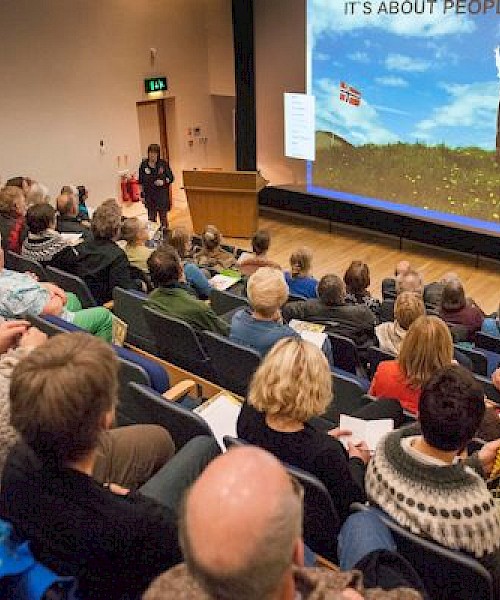Authenticity in 'Shetland' Lace Knitting

The exhibition of 'Shetland' lace samples in Shetland Museum & Archives Foyer, March 2016
The Authenticity Project developed out of research by Shetland Museum curator Carol Christiansen into knitting patterns labelled ‘Shetland’ in 19th century published pattern books, and by Roslyn Chapman, Charlotte Nicholson Postdoctoral fellow at University of Glasgow, into the Shetland lace industry as a whole. (1) It formed an adjunct to a study day about Authenticity in Culturally-Based Knitting, as part of the ‘Knitting in the Round: Hand-Knitted Textiles and the Economy of Craft in Scotland’, organised by the School of Humanities, University of Glasgow. Chapman and Christiansen collaborated on this initial scoping exercise to determine the viability of further investigation into comparative analysis of published knitting patterns with original knitted lace held in Shetland Museum’s Textile Collection.
(1) Chapman, R. 2015. The History of the Fine Lace Knitting Industry in Nineteenth and Early Twentieth Century Shetland, PhD thesis, School of Humanities, University of Glasgow.
Patterns labelled as ‘Shetland’ in books by a range of authors published between 1840 and 1880 were selected for investigation. Knitters at the University of Glasgow were asked to knit the patterns, and through social media and other means, knitters from across the globe learned of the project and volunteered to take part. We were contacted by over 450 volunteers, of which nearly 140 people knit nearly 300 samples. Male and female knitters participated, sending samples from as far away as Thailand and the USA. Only a fraction of the samples could be exhibited, although the remaining samples are valuable for further research into 19th century knitting patterns and their relationship to real Shetland lace knitting of the period.
Due to the collaborative volunteer nature of the investigation, it was deemed necessary to present these preliminary results to a wide audience. The initial scoping exercise resulted in an exhibition, and short paper and discussion presented at the Authenticity Study Day. The results of the exercise strongly indicate that a possible relationship existed between hand-made knitted lace exported from Shetland and machine-made ‘Shetland’ lace produced in Nottingham, with knitting patterns published between 1840 and 1880. Future investigations into these relationships will be dependent on securing funding.
Download the sources used for this research project here.
View the study day broadcast here.
Please cite this webpage as reference, in full, when using any of the texts or images below which make up the exhibition.
Download the exhibition introduction panel.
 Frances Lambert, 1846 - 1847
Frances Lambert, 1846 - 1847
London-based businesswoman Frances Lambert was a successful author of knitting pattern books, selling tens of thousands of copies. Patterns for the samples were knit from her 1846 edition of Hand-Book of Needlework and the second series of My Knitting Book from 1847.
Accompanying information panels:
Download Frances Lambert overview and sample descriptions
 Owen, Jackson, Watts, Cooper, Warren, Copley & Corbould, 1844-1878
Owen, Jackson, Watts, Cooper, Warren, Copley & Corbould, 1844-1878
These authors all published patterns they identified as ‘Shetland’, from small, single patterns to whole garments.
Accompanying information panels:
Download author overviews and sample descriptions
 Jane Gaugain & Mlle E. Riego de la Branchardiére, 1846-1867
Jane Gaugain & Mlle E. Riego de la Branchardiére, 1846-1867
Gaugain and Riego were based in Edinburgh and London, respectively. Both authors presented patterns more elaborate than many of the other authors, combining several motifs in a garment. Their patterns are more like Shetland lace patterns, although they fall short of the complexity of knitted lace design from Shetland.
Accompanying information panels:
Download Gaugain and Riego overview and sample descriptions

